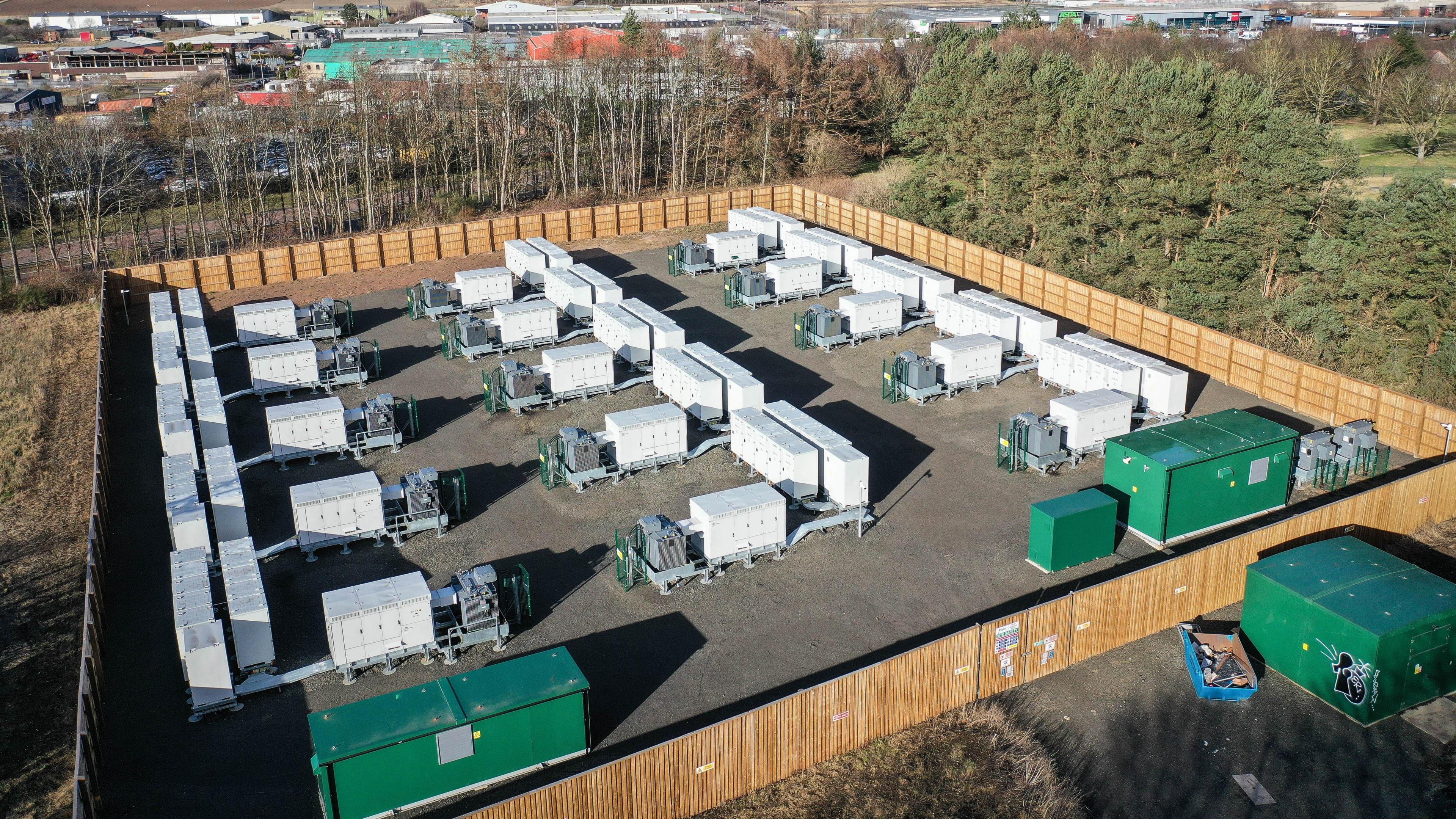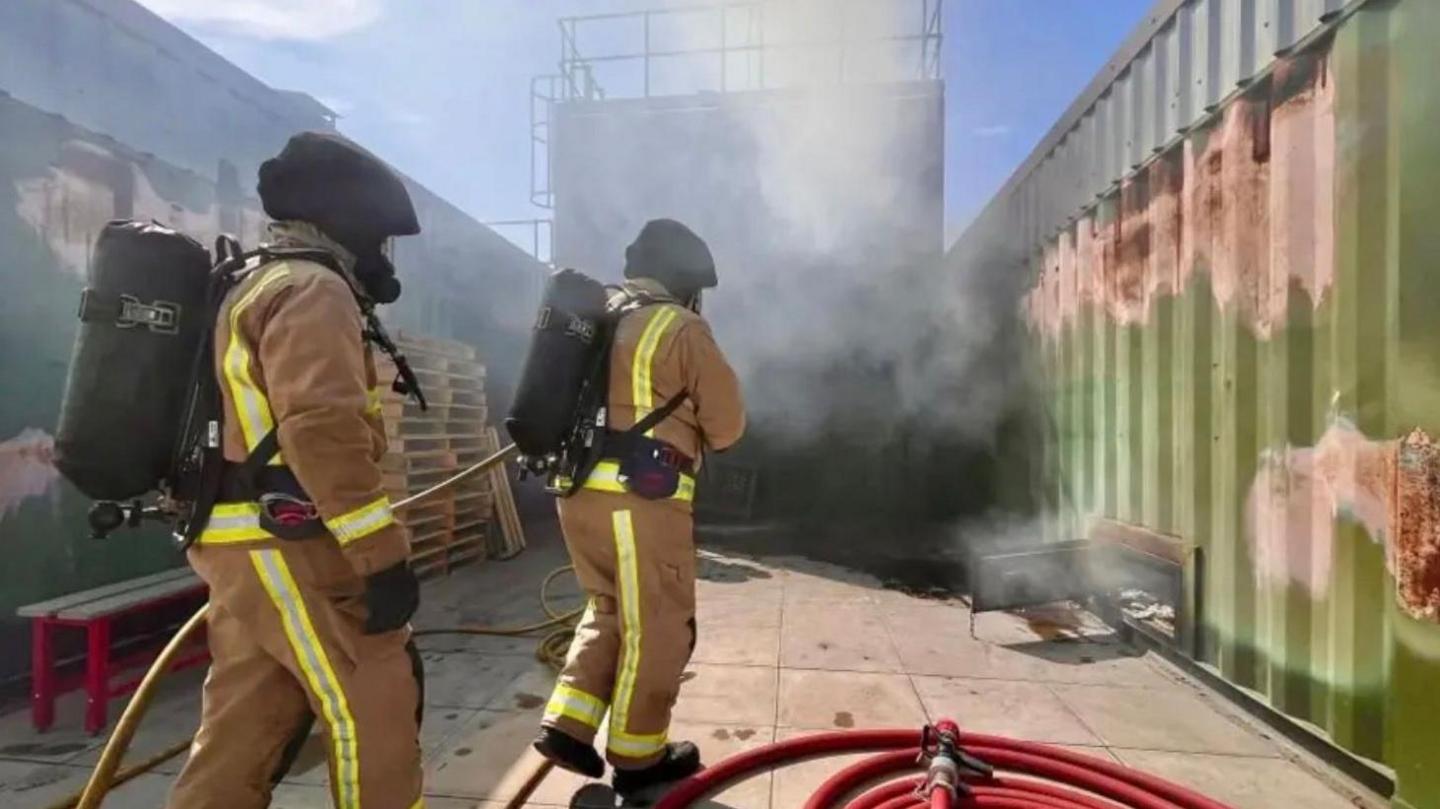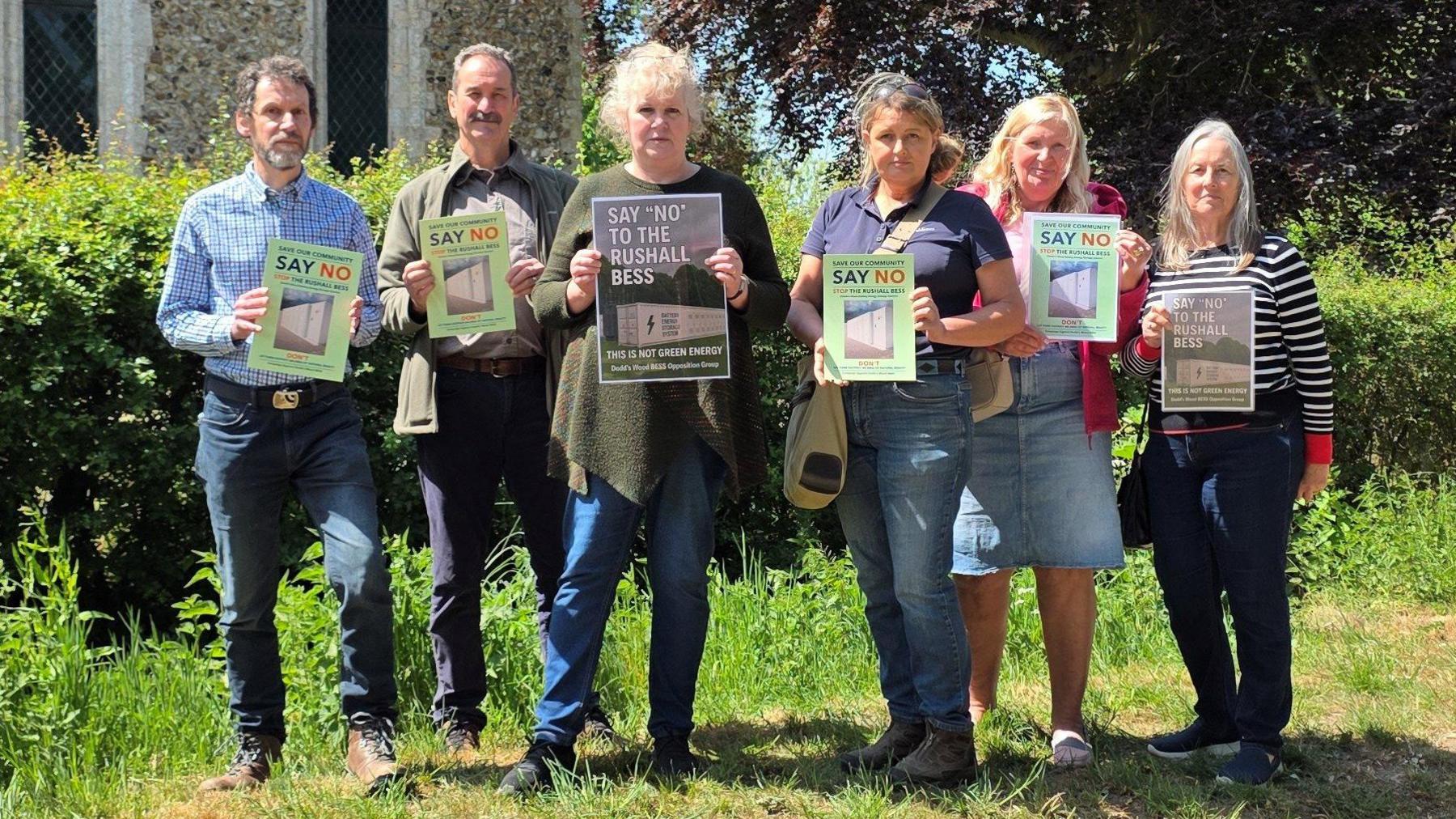'Design failure' poses fire risk at battery site

Battery storage facilities, like this one in Dundee, are used to store electricity until it is sold back to the grid to meet high demand
- Published
A "design failure" in plans for a battery energy storage facility "significantly increases" the risk of a major fire at the proposed site in Lincolnshire, a public health watchdog has warned.
Battery modules at the site near Navenby are packed too close together to prevent the spread of fire in a "domino effect" under the plans submitted to the local council, the UK Health Security Agency (UKHSA) said.
The applicant also "fails to address the high probability that a lithium-ion fire will be left to burn for days or weeks… prolonging the potential exposure of nearby residents to toxic gases", it added.
The BBC has approached developers Windel Energy and Recurrent Energy for comment.
The developers of the proposed Navenby Battery Energy Storage System (BESS) say it will store up to 400MW of electricity to "to support the transition to a greener and more stable Grid Network"., external
In its public consultation brochure, they say: "Advanced safety measures, including continuous monitoring of individual battery cells, are in place to promptly address any potential concerns and manage operations for utmost safety."

Lincolnshire County Councillor Marianne Overton MBE wants an "urgent review" of battery safety
However, in a letter to North Kesteven District Council, the UKHSA said the proposed 3.5m spacing between battery modules did not comply with the current National Fire Chiefs Council guidance which suggests a minimum 6m separation to prevent the spread of fire via thermal radiation.
"The non-compliant 3.5m spacing significantly increases the probability of a domino effect (thermal runaway)," it said.
"This design failure renders the air quality modelling... unreliable and insufficient to safeguard the community."
The UKHSA also raised concerns about the size of a "firewater lagoon" on the site and warns that a failure to contain water used in firefighting would lead to "the release of highly toxic firewater run-off (containing heavy metals and corrosive acids) into the aquifer, posing potential contamination risk to land and groundwater, the public water supply and environmental health".
In addition, the authority was concerned there had been no assessment of the potential impacts on public health of electromagnetic fields.
It acknowledged that its intervention in a local planning process was unusual but said it had written to the authority because of "community objections based on health concerns.".
Marianne Overton, an independent councillor from Lincolnshire County Council and a member of the Cliff Villages Solar Action Group, said she wanted a review of battery safety.
"The county has about 25 applications for these battery storage systems and many are near houses and schools," she said.
"We have to think carefully whether these systems can be safe at all."
Battery energy storage schemes (BESS) can be used to store electricity from solar or wind farms and offer back-up power when the sun is not shining or the wind is not blowing.
There are at least 124 operational schemes in the UK and many more are being planned, but their use of lithium batteries has led to safety concerns, external.
Senior fire officers in other parts of the country have described BESS schemes as an "emerging risk".
Suffolk Fire Service has built a training centre where a BESS fire can be simulated.

Suffolk firefighters at their training centre in Wattisham, where a Battery Energy Storage System fire can be simulated
In May, a Department for Energy Security and Net Zero spokesperson said: "Every wind turbine we put up, every solar panel we install and every battery storage facility we construct helps protect families from future energy shocks.
"Battery fires at storage sites are rare in the UK.
"We already have high safety standards in place that require manufacturers and industry to ensure batteries are safe throughout their lifespan."
Listen to highlights from Lincolnshire on BBC Sounds, watch the latest episode of Look North or tell us about a story you think we should be covering here, external.
Download the BBC News app from the App Store, external for iPhone and iPad or Google Play, external for Android devices
Related topics
- Published27 May

- Published23 May
